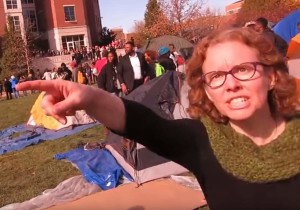In the old days – I mean 60 or 70 or 80 years ago – left-leaning intellectuals and semi-intellectuals in the United States used to focus their political concern on matters of social-class inequality. They had a certain sympathy with Marxism (sometimes a very great sympathy), and they were champions of the working class and enemies of the rich. Of course, they were also concerned about racial inequality, but in a secondary way. If justice were done to the working class, justice to blacks would sooner or later follow.
All this changed in the late 1950s and early 60s, when the leftist focus shifted to racial inequality. This happened for two reasons. For one, as a result of the New Deal, the rise of the CIO, the GI Bill of Rights, and postwar prosperity, the condition of the working class had been greatly ameliorated. Workers now had labor unions. The children of workers were going to college and entering the middle classes.
The working class no longer needed the patronage of leftists. For another, the modern Civil Rights movement had emerged under the leadership of Martin Luther King, Jr. and others. Blacks were on the move. For the first time since the days immediately following the Civil War, equality for blacks seemed a realistic ideal.
Circumstances, then, had changed. But the universe of leftist intellectuals and semi-intellectuals had also changed. For one thing, there were many more of them in the 1960s and later decades than there had been in the old days. This was a natural result of the tremendous explosion in the numbers of college-educated people in the postwar period. For another, the typical leftist intellectual or semi-intellectual was no longer an impoverished artist or a badly paid professor living at the fringes of society.
No, beginning in the 1960s and becoming even more so in the decades that followed, the typical leftist intellectual was a well-paid professional – a lawyer, for example, or an environmental scientist or engineer, or a journalist at a large news organization, or a government bureaucrat, or a well-paid professor at a large university. Leftist intellectuals now made up a large section of the upper-middle class – individuals and couples who enjoyed good jobs, good incomes, good houses, good cars, good wine, and good coffee.

In short, these were – and they still are – privileged people. But privileged people in every age and every country have always felt the need to justify their privileges. Since they are better off than the great majority of the population, they need a theory that proves that it is right that they should be better off. They need this theory to give themselves an easy conscience. But they also need it to neutralize any resentment that might come from the non-privileged sectors of society; they need to persuade the underlings that it is only right that they should be underlings.
A focus on racial injustice is just the theory needed today by these privileged intellectuals. The theory says five things:
(1) despite gains made by Martin Luther King and others, racial injustice remains America’s number one evil;
(2) given America’s long and wicked history of anti-black racism, all whites are more or less racist;
(3) while white leftist intellectuals have some residues of racist thought and feeling in themselves, they hate these residues and have spent their lives rooting them out;
(4) however, the great majority of white Americans, being non-leftists, are complacent about their racist thoughts and feelings, and even go so far in their self-deception as to deny the existence of these thoughts and feelings; and therefore
(5) white leftists are morally superior to all other whites, and consequently they deserve their many privileges.
But there are at least two further reasons for keeping the focus on racial inequality. For one, if the focus is shifted away from race inequality, it is likely to shift back to class inequality; and in that case upper-middle class leftists, instead of being models of virtue, will be seen as bad guys – people living off the fat of the land while the rest of us struggle to get by.
For another, the moral superiority of upper-middle class white leftists is totally dependent on the belief that they, and they alone among whites, are truly virtuous; not only do they sincerely detest racism, the greatest of all American sins, but they use their privileged position in society to help blacks survive the racism aimed at them by ordinary whites.
In ages past some privileged classes have justified their privileges by boasting, “We practice the good old Christian virtue of chastity.” But that won’t do today. For today’s upper-middle class leftists don’t believe chastity is a virtue (though they do believe that one should be prudent while being unchaste); neither do they believe in Christianity. So they have no choice but to keep alive what may be called “the myth of white racism.”















